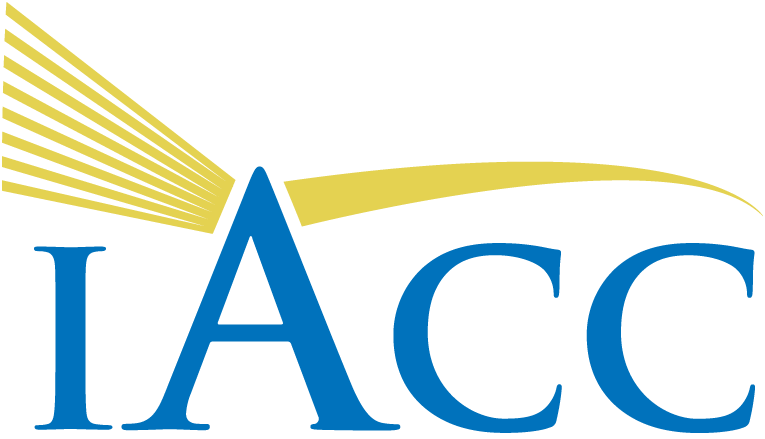Report to Congress
on Activities Related to Autism Spectrum Disorder and Other Developmental Disabilities
FY 2019 - FY 2023
Summary and Conclusion

Since the enactment of the Combating Autism Act in 2006, and its most recent reauthorization under the Autism CARES Act of 2019, federal departments and agencies, in partnership with the autism community, have made significant strides in addressing many of the pressing needs of autistic individuals and their families. In the period covered by this report (FY 2019 – FY 2023), federally funded programs and projects have increased knowledge on the prevalence of ASD in the U.S. population; improved early screening and diagnosis of ASD; increased understanding of the biology underlying autism, as well as genetic and environmental factors that may contribute to autism; developed new and improved upon existing interventions to promote health and well-being for individuals on the autism spectrum; and increased access to services and supports, including education, housing, HCBS, and employment supports, to enable autistic individuals to live and participate fully in the communities of their choice.
In FY 2019 – FY 2023, efforts from the CDC, HRSA, ED, and EPA contributed to increased knowledge on the prevalence of ASD in the United States. The most recent estimate from CDC’s ADDM Network shows that approximately 2.8% of children in the United States have autism.1 This number has increased steadily since 2000, when the ADDM Network first began its surveillance efforts. HRSA’s analysis of 2020-2021 NSCH data had a similar finding of 2.5% of children in the United States having ASD. EPA’s analysis additionally indicates that the percentage of children reported to have autism in the United States has increased by 12-fold from 1999 (Figure 2). This increase is also reflected in data collected by ED on the number of children with autism served under the IDEA, Part B, for fall 2012 through fall 2021 (Table 16 and Figure 1). The most recent report from the ADDM Network also indicated that, for the first time, autism prevalence in Black, Hispanic, and Asian/Pacific Islander children was higher than in White children,1 suggesting that awareness, identification, and access to services is improving in those communities, though it is important to consider other factors that may be leading to higher rates of ASD in historically underserved communities. Continued efforts by federal departments and agencies to enhance our understanding of the number and characteristics of individuals on the autism spectrum is vital to ensure that services and supports are available in communities to meet the needs of autistic individuals and their families.
Research studies funded by federal agencies are harnessing the power of technology to improve early screening and diagnosis of ASD. Projects funded through NIH’s Early Autism Screening Initiative, as well as other funding opportunities, are developing and validating tele-assessment and other tools to detect ASD beginning in the first year of life. NIH- and FDA-supported researchers are also working to identify novel biomarkers that can be used to detect ASD, identify subsets of ASD, or be used as indicators of intervention response. Additionally, CDC’s Learn the Signs. Act Early. program continues to encourage early, ongoing, and family-engaged developmental monitoring of all children and promote early identification of developmental delays so that children and their families can receive early intervention and the services and supports they need to promote health and well-being.
Research funded and conducted by several federal departments and agencies have also led to increased knowledge of autism’s underlying biology and the genetic and environmental factors that can contribute to the development of autism. NIH-funded projects advance the understanding of the genomics and neurobiology of autism and other related disorders and factors that affect communication and social functioning in individuals on the autism spectrum. The DoD’s ARP also funds research aimed at gaining a better understanding the biological mechanisms of autism to improve health outcomes and quality of life, including characterization of genetic variants associated with ASD and the role of different signaling molecules in the brain contributing to autism. Meanwhile, researchers funded by the EPA are investigating environmental exposures that may contribute to the development of autism and the effects of these exposures at various life stages. Together, these efforts will pave the way for future targeted interventions and services research to improve outcomes for individuals on the autism spectrum.
Additional efforts by federal departments and agencies are already underway to improve interventions for autistic individuals. Research studies funded by AHRQ aim to determine what interventions lead to maximum benefits, prevent adverse drug events for children with ASD who take antipsychotic medications, and better implement early intervention services. HRSA-funded research programs have evaluated interventions that address barriers to intervention access and effectiveness and tested the efficacy of behavioral interventions in school and community settings. Interventions developed by NIH-funded researchers target pre-verbal and nonverbal children on the autism spectrum, aim to improve social skills and interactions for autistic children, and address the needs of transition age youth on the autism spectrum, as well as the needs of autistic adults through older adulthood. DoD-funded research is examining how psychosocial interventions can be used to treat co-occurring anxiety and insomnia in individuals with autism, as well as testing interventions to improve independent living and emotional regulation. ED-funded activities are developing and implementing classroom interventions to improve the educational and developmental outcomes of students on the autism spectrum.
Federal departments and agencies are working to ensure that all individuals on the autism spectrum can live and participate fully in the communities of their choice, with support from evidence-based interventions, services, and supports, including HCBS. Research funded by ACL’s NIDILRR focuses on the development of interventions to improve community living and participation among children, transition age youth, and adults with autism, and ACL oversees a number of federal programs that support quality community for individuals on the autism spectrum, including support for independent living and advocacy to ensure equity in housing and employment. CMS works with states to assure and improve the quality of Medicaid HCBS programs and provide the opportunity for Medicaid beneficiaries to receive services in their own homes and communities. DOL’s LEAD Center supports state-level efforts to promote policies and practices that provide all people, regardless of disability, with the opportunity to work. In addition, DOL-funded research characterized VR service use and employment outcomes by state and identified access barriers to VR services. Meanwhile, HUD is providing technical assistance to assist persons with disabilities to transition from living in institutional settings to living in the community, expanding the availability of accessible and affordable housing, and improving HCBS. These activities together will support autistic individuals in leading independent and fulfilling lives.
Government-wide efforts have also been working to ensure diversity, equity, inclusion, and accessibility for all Americans in federal government policies, federally funded programs, and federal employment, which has resulted in expanded opportunities for people with disabilities. The IACC and the NAC have worked to ensure coordination and collaboration among federal departments and agencies on issues related to autism. Data sharing among different federal agencies such as the CDC and ED have led to a better understanding of the autistic population in the United States, and multi-agency efforts such as the Dataset on Intellectual and Developmental Disabilities, led by HHS’s ASPE and with input from ACL, CDC, NIH, CMS, and DOL, combine individual agency expertise to maximize effectiveness. Federal departments and agencies also keep abreast of autism-related activities and initiatives in the federal government through information shared during IACC meetings, as well as meetings of the FIWA led by the NAC. Many federal agencies have developed innovative collaborations and partnerships to advance disability services that benefit individuals with autism.
The NAC, FIWA, and additional federal agencies contributed information to multiple reports to Congress related to autism, including 23 recommendations in the 2021 Report to Congress on the Health and Well-Being of Individuals with ASD and information on the landscape of federally funded services available to individuals on the autism spectrum in the 2022 Report to Congress on Supportive Services for Individuals with Autism.
The IACC will continue to facilitate coordination among federal departments and agencies, as well as between federal and private partner organizations, by providing strategic guidance and acting as a forum for public input to ensure that federal efforts align with priorities of the autism community. The NAC and FIWA provide additional opportunities for collaboration and information exchange between federal departments and agencies and respond to the evolving needs of individuals on the autism spectrum and their families. Overall, the combined efforts of departments and agencies across the federal government, in partnership with the autism community, will ensure continued focus on efforts to improve the health and well-being of all autistic individuals across the lifespan.




